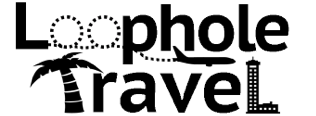 During our time in Europe we learned a few lessons. In this post, I will break them down into our Top 10 Tips for a successful EuroTrip. Some of these tips will be specific to the area of Europe we visited, while others will have almost-universal application. I hope you find these helpful!
During our time in Europe we learned a few lessons. In this post, I will break them down into our Top 10 Tips for a successful EuroTrip. Some of these tips will be specific to the area of Europe we visited, while others will have almost-universal application. I hope you find these helpful!
Disclosure: We get a commission for some links on this website. You don’t have to use our links, but we’re very grateful when you do. Opinions expressed here are the author's alone, and have not been reviewed, approved or endorsed by our partners. Here’s our Advertiser Disclosure.
Tip #1: How to be Money Smart
You cannot avoid this fact – you will need money for meals, tours, transport, souvenirs, etc. Most vendors in Europe will not accept US Dollars, so at some point, you will need to convert your currency. This can be one of the least transparent processes on the planet, because money changers will exploit the general lack of understanding to charge exorbitant fees or insane conversion rates. If you don’t know what you’re doing, you will end up losing a lot of value coming and going, while converting your money!

To obtain the best exchange rate and avoid fees, you should pay for your purchases with a credit card that waives foreign transaction fees. We used our Chase Sapphire Preferred card for almost everything while abroad. All foreign transaction fees were waived, and our transactions were processed at the best available currency conversion rate. If you take this approach, most credit card terminals will give you the option to pay in dollars or the local currency. Always decline to pay in dollars and accept the local currency. The reason for this is because most card terminals add their own conversion fee to convert the transaction to dollars (usually 1-3%). I spot-checked a few of our purchases, by comparing the proposed dollar charge on the card terminal to the amount on our Chase statement. Every time, the proposed dollar charge at the terminal was higher. Be sure to set up a travel notification on your credit card before departing for your trip, and bring a back up card in case you run into any issues.

Some vendors will only accept cash, so you will likely need to convert at least a small amount of cash to carry with you. Try to plan ahead by researching which specific items you will need to pay with cash. Street parking, tips for tour guides, and small food vendors were our main uses of cash. We exchanged only what we needed, and we made sure to use our cash before returning home, to avoid additional conversion fees back to dollars. Local banks will generally offer the best exchange rates and low/no fees, while airport Currency Exchanges will be the most expensive option. Do a quick search for the current exchange rates here, so you will know if the rates you encounter are reasonable. One additional option for getting cash is the Charles Schwab debit card. It offers no ATM fees worldwide and matches the best available exchange rate.
Tip #2: How to Navigate Without Phone Signal
We depend on our iPhones for so many daily tasks. This becomes a particular pain point while abroad, without access to phone signal. If your phone is unlocked, you can purchase a local SIM card with prepaid data. However, we found a better solution for navigation without having to pay for data.
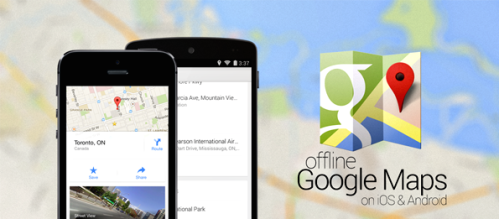
The Google Maps app allows you to download maps for offline use! These maps are searchable and will provide driving directions. The app will re-route you if you miss a turn, even without phone signal! To download an offline map, simply load your Google Maps app, open the menu, and log in. Then choose offline maps and find the area of the world you need. You may need to zoom in until the app permits you to download the area. We kept our phones in Airplane mode during our trip and downloaded city and regional maps when we had access to Wifi.
Tip #3: Learn the Local Tipping Culture
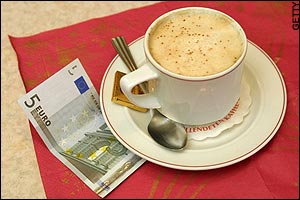 In the US, we have a generally accepted tipping percentage of 15-20% at restaurants. This is based on the fact that servers in the US are paid a low hourly wage, and tips make up a large portion of their earnings. In most other countries, servers are paid a higher wage, so tipping is less expected. Be sure to learn about the tipping culture of the country you are visiting, before you automatically add 20% to your bill. Generosity is excellent, and if your server does a great job, feel free to tip as you deem appropriate. Just be aware that this is not an “obligation” or “expectation” like in the US.
In the US, we have a generally accepted tipping percentage of 15-20% at restaurants. This is based on the fact that servers in the US are paid a low hourly wage, and tips make up a large portion of their earnings. In most other countries, servers are paid a higher wage, so tipping is less expected. Be sure to learn about the tipping culture of the country you are visiting, before you automatically add 20% to your bill. Generosity is excellent, and if your server does a great job, feel free to tip as you deem appropriate. Just be aware that this is not an “obligation” or “expectation” like in the US.
We also learned that in the UK, if you leave a tip on a credit card receipt, it will often go to the establishment, not the server. We asked a server at one of our hotels in Scotland, and she confirmed that any tip left on the card would go to the hotel. Be sure to ask, if you plan to leave a tip, to make sure it gets into the right hands!
Tip #4: Rent a Car and Get Outside the Cities
Many people choose to visit other countries, but they never leave the metro areas. We spent a significant portion of our trip driving the gorgeous, winding, country roads of Ireland and Scotland. Some of the absolute highlights of our trip were the scenic drives along the Irish coast, through the Scottish mountains, and along Loch Ness!
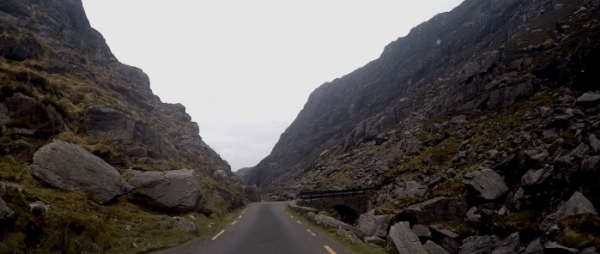
Driving the Gap of Dunloe
Now, I can probably read your mind a bit here – “Bro, there is NO WAY I’m going to try to drive on the wrong side of the road!” Honestly, I was a bit concerned about this as well. Let me tell you – It really is not bad! We picked up our rental at the Dublin Airport, and it was a bit awkward at first. However, after about 30 minutes, it started to feel quite natural. I was surprised at how quickly we took to driving on the opposite side of the car and the road. When we got home, it was almost awkward to drive on the right side! If you are still nervous, watch some YouTube tutorials to get a feel for the different angle. Pay special attention to lessons on roundabouts… they are everywhere.
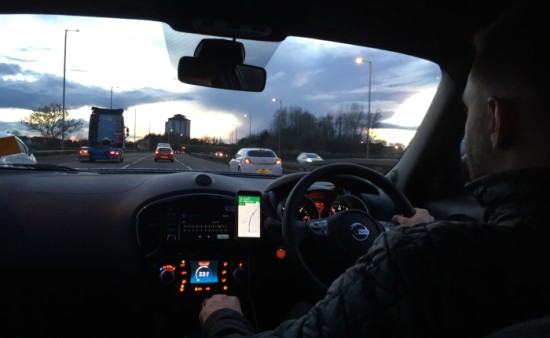
Driving in Glasgow
Bonus Rental Car Tips –
- Manual transmission cars are significantly cheaper than automatics! For example, a 5-day rental for a manual at DUB was only 25 EUROS TOTAL, while the automatics started at $100. Learn to drive a stick!
- NEVER prepay for gas. They will offer you a “premium rate,” but then they will also add tax, making it a worse rate than the local petrol stations. Also, any gas in the tank when you return the car is essentially a donation to the company.
- Cars have a “reserve gas tank.” Check the manual in the glove box to find out the reserve tank capacity. In our case, it was a 7L reserve. If you deplete the reserve, the gas gauge still shows as full when you return the car. We filled up 65 miles away from the airport and still showed a full tank upon arrival.
- Pay with the Chase Sapphire Preferred card for primary insurance coverage. Decline all insurance offered by the car company, and Chase will have your back. The insurance cost at Enterprise in Dublin was going to be 254 Euros for our 5-day rental!!
Tip #5: Bring a Power Adapter and Multi-Plug
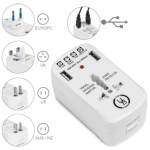 Smart phones, cameras, laptops, and a host of other useful devices will require regular access to power. If you want to plug these devices in, you will need a power adapter. We also found that outlets were different in France than in Scotland or Ireland. Fortunately, we brought our Universal Power Adapter. This converter can be used in most countries around the world.
Smart phones, cameras, laptops, and a host of other useful devices will require regular access to power. If you want to plug these devices in, you will need a power adapter. We also found that outlets were different in France than in Scotland or Ireland. Fortunately, we brought our Universal Power Adapter. This converter can be used in most countries around the world.
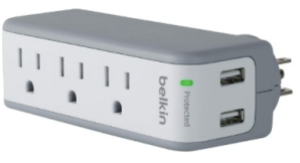 Having a converter is essential, but it only provides a single outlet. This is problematic when we have multiple devices to charge. To address this issue, we picked up a three-outlet/two-USB plug on Amazon. This gadget is incredible! It allows us to charge both of our phones, both laptops, and a camera battery at the same time! As an added bonus, it also provides surge protection. We had no issues using it with European power.
Having a converter is essential, but it only provides a single outlet. This is problematic when we have multiple devices to charge. To address this issue, we picked up a three-outlet/two-USB plug on Amazon. This gadget is incredible! It allows us to charge both of our phones, both laptops, and a camera battery at the same time! As an added bonus, it also provides surge protection. We had no issues using it with European power.
Tip #6: Check all Transportation Options
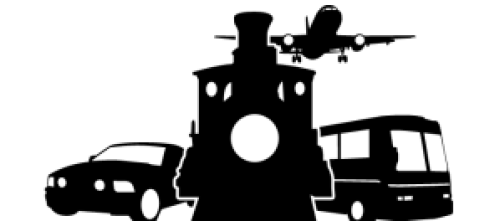
Most people assume that the best method of travel between European cities is by plane. When we started planning our trip, we looked at budget carriers like Ryan Air for flights between cities. However, we quickly realized that most airports are very inconveniently located. For example, London has a few airports – Heathrow, Gatwick, Standsted, Luton, etc. Each of these is a minimum 30-40 minute train ride from the center of the city! Charles de Gaulle airport in Paris even requires a 45-minute train ride from the main train station.
Consider other options like buses and trains. We took an overnight sleeper Megabus from Glasgow to London. Not only was it very inexpensive (only 25 GBP each), the bus station in London was also very centrally located, and we saved a night of hotel expense! We also rode the high-speed Eurostar train from London to Paris, and it was a great experience.
Tip #7: Pack Carry-on Bags Only
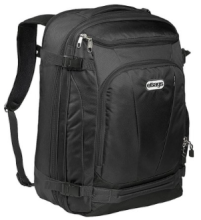 This may sound crazy, but trust me, it is much easier than you imagine. We were both able to pack 18-days worth of clothing, electronics, and toiletries in our eBags TLS Weekender Junior backpacks. Heck, I even packed a half-dozen golf balls (only needed two!) for St. Andrews with room to spare!
This may sound crazy, but trust me, it is much easier than you imagine. We were both able to pack 18-days worth of clothing, electronics, and toiletries in our eBags TLS Weekender Junior backpacks. Heck, I even packed a half-dozen golf balls (only needed two!) for St. Andrews with room to spare!
With only carry-on bags, we were never stuck waiting at baggage claim or lugging heavy suitcases through the city streets. We also saved money by not having to check a bag on our intra-Europe flight. I really like having all of my belongings in my possession during the trip. You never know what can happen when your bag leaves your sight.
Packing efficiently does require some strategic thinking, which we will cover extensively in a separate article. Some basic considerations are:
- Plan to do laundry once during your trip. You can find a Laundromat or even use a bathtub. We brought some powder detergent in a zip lock bag. (Got an odd look from airport security!)
- Layers work well for warmth. No need to bring heavy garments, when you can layer a few lighter ones. This allows for mixing/matching for multiple outfit possibilities.
- Wear your bulky items on flights. Boots/jackets/jeans may not fit in your bag, so wear them while in transit.
Tip #8: Wear Comfortable Shoes!
You will most likely be doing a lot of walking! According to our iPhone Health app, we averaged just under 18,000 steps per day, with some days topping out at 10 miles! Comfortable shoes are essential! If it comes to a choice between fashion and comfort, choose comfort! Fortunately, we can recommend a few shoe options that are both comfortable and fashionable. My wife and I each packed the following shoes on our trip, and we were thrilled with how they performed.
Ladies’ Shoes
 Ja-vie Flats – These shoes are a perfect blend of excellent styling and comfort-focused technology. They feature high-support insoles to keep your feet comfortable during all-day walking tours. They also look beautiful as dress flats for a night out on the town. Full review here.
Ja-vie Flats – These shoes are a perfect blend of excellent styling and comfort-focused technology. They feature high-support insoles to keep your feet comfortable during all-day walking tours. They also look beautiful as dress flats for a night out on the town. Full review here. Columbia Vulc-n-Vents – These shoes are all about keeping your feet happy and breezy. The patented air chamber technology keeps air flowing through the sole of the shoe, and they feature comfortable foot bed padding. They fold almost completely flat for easy packability.
Columbia Vulc-n-Vents – These shoes are all about keeping your feet happy and breezy. The patented air chamber technology keeps air flowing through the sole of the shoe, and they feature comfortable foot bed padding. They fold almost completely flat for easy packability.
Mens’ Shoes
 Blundstone Boots – These boots are durable, comfortable, and very stylish. They are made of full grain leather, with durable rubber outsoles. Like any boots, they take a few days to break in properly. But after that, they are like butter on your feet! Hike the through the woods and mud, and then wipe them off with a damp cloth before heading to a nice restaurant for dinner.
Blundstone Boots – These boots are durable, comfortable, and very stylish. They are made of full grain leather, with durable rubber outsoles. Like any boots, they take a few days to break in properly. But after that, they are like butter on your feet! Hike the through the woods and mud, and then wipe them off with a damp cloth before heading to a nice restaurant for dinner. Columbia Vulc-n-Vents – See above for description. Awesome sneakers!
Columbia Vulc-n-Vents – See above for description. Awesome sneakers!
Tip #9: Know When Museums or Attractions are Closed (and also when they are FREE!)

Wouldn’t it be terrible to plan a visit to the Musee d’Orsay for your last day in Paris, only to learn that it is closed on Monday?? We almost made this exact mistake. Fortunately, my wife noticed this detail on their website while searching for the entry fee. We visited on Sunday instead, which just-so-happened to be the FREE first Sunday of the month (saved 24 Euros)! We also learned that the Louvre is closed on Tuesdays. Be sure to check your plans and ensure you don’t miss out due to a closure.
Tip #10: Split Meals
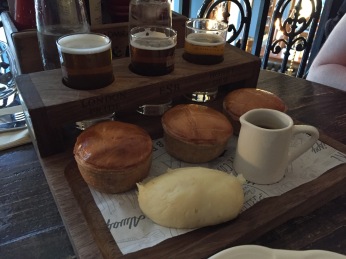 This is honestly good advice for couples in general, but it is especially important while on vacation. You will likely be eating most/all of your meals out at restaurants and cafés. This tends to add up quickly, particularly in expensive cities like London. Additionally, portion sizes are usually generous (except for fine dining restaurants), so you will both have enough to eat. Who wants to be toting around left overs on vacation?? If you’re still hungry, you can feel free to share a delicious dessert. Using this tactic, we saved quite a bit of money. Coupled with all of the walking, we even managed to lose weight while on vacation!
This is honestly good advice for couples in general, but it is especially important while on vacation. You will likely be eating most/all of your meals out at restaurants and cafés. This tends to add up quickly, particularly in expensive cities like London. Additionally, portion sizes are usually generous (except for fine dining restaurants), so you will both have enough to eat. Who wants to be toting around left overs on vacation?? If you’re still hungry, you can feel free to share a delicious dessert. Using this tactic, we saved quite a bit of money. Coupled with all of the walking, we even managed to lose weight while on vacation!
Bonus Tip: Showers in Europe are Complicated!
We stayed in a lot of different accommodations, including a castle, a few AirBNB’s, and five different hotels. Every.single.one of them had a different mechanism to turn on the shower and adjust the temperature! Each one featured different knobs or levers to push/pull/twist/bop/crank/tilt. Some were relatively simple, but others required an engineering degree to operate. If you plan to bathe whilst on your EuroTrip, be sure to bring your thinking cap! Cheers!
If you enjoy the content on Loophole Travel, Like us on Facebook, Follow @loopholetravel on Twitter, and subscribe to our weekly newsletter!
Editorial Disclaimer: Opinions expressed here are author's alone, not those of any bank, credit card issuer, airlines or hotel chain, and have not been reviewed, approved or otherwise endorsed by any of these entities.
Disclaimer: The responses below are not provided or commissioned by the bank advertiser. Responses have not been reviewed, approved or otherwise endorsed by the bank advertiser. It is not the bank advertiser's responsibility to ensure all posts and/or questions are answered.
